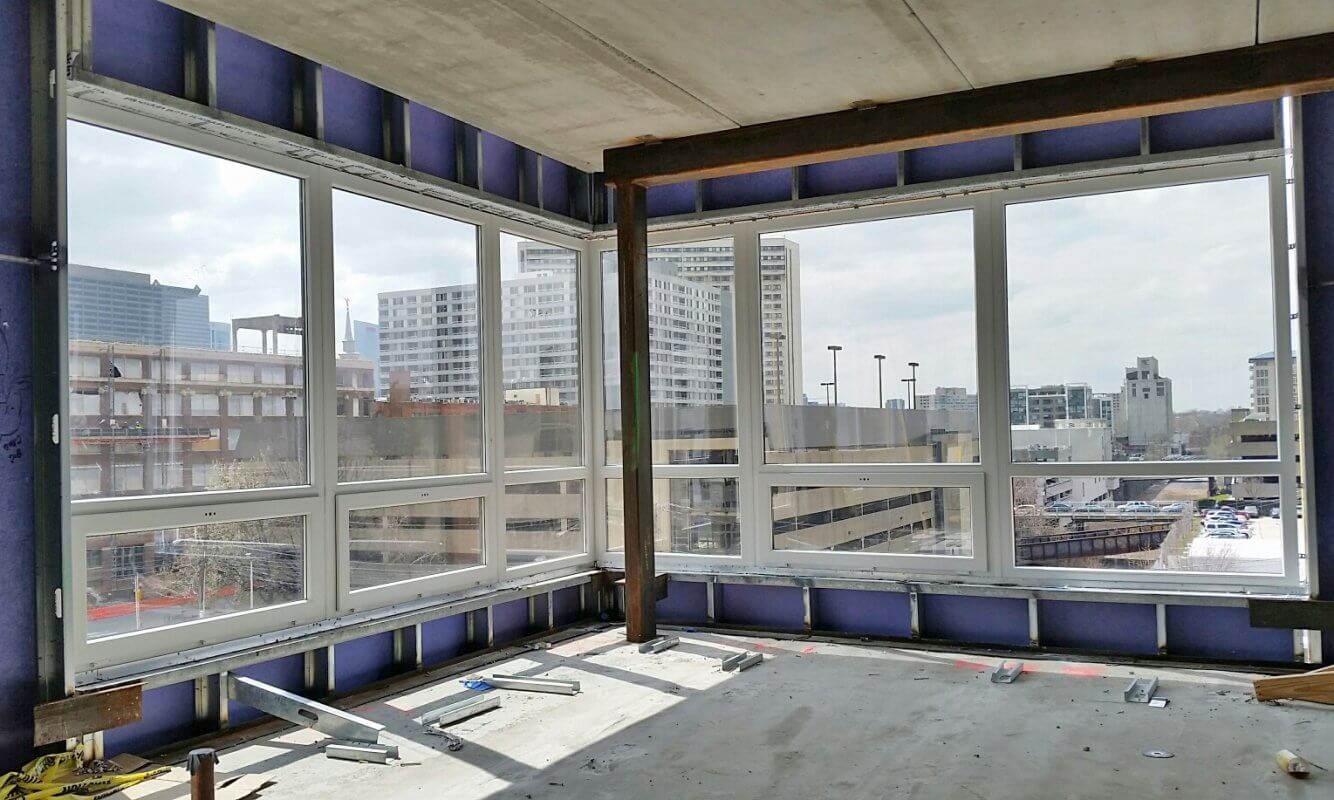In Philadelphia, the 2018 International Energy Conservation Code (IECC) went into effect on October 1. In the architectural design world, when considering the energy performance of a building’s glazed façade system, one of the many related questions might be, “Is it possible to exceed 30 percent fenestration for the glazed building envelope while complying with the new code?” Fortunately that answer is yes.
Three 2018 IECC compliance pathways related to window-to-wall ratio
There are three options for the compliance pathway as part of the 2018 IECC. First is to follow the requirements as outlined in the 2018 IECC Prescriptive pathway. Second, we can follow ASHRAE 90.1-2016. Third, we can elect to follow the 2018 IECC Performance pathway. We are not permitted, as designers, to mix and match these three options.
Option 1: 2018 IECC Prescriptive pathway
Let’s start with the 2018 IECC Prescriptive pathway. Section C402.4 Fenestration (Prescriptive) subsection C402.4.1 Maximum area says that “vertical fenestration area, not including opaque doors and opaque spandrel panels, shall be not greater than 30 percent of the gross above-grade wall area.” However, Section C402.4.1.1 Maximum area allows for the percentage to increase to 40% provided the building is located in Climate Zones 1 through 6 and the following requirements are met:
- In buildings two stories or less a minimum of 50% of the net floor area is located in the daylight zone.
- In buildings three stories or higher a minimum of 25% of the net floor area is located in the daylight zone.
- Daylight responsive controls that comply with Section C405.2.3.1 are installed in the daylight zones.
- Visible transmittance (VT) of the vertical fenestration is a minimum of 1.1 time the solar heat gain coefficient (SHGC).
So, in our region we have a limited pathway to 40% fenestration, because we are in Climate Zone 4, but what if the building owner wants even more glass on their façade?
Option 2: ASHRAE 90.1-2016
ASHRAE 90.1-2016, Section 5.5.4.2.1 Vertical Fenestration Area limits us to a range of 0-40% based upon Tables 5.5-0 through 5.5-8. There is one exception that is allowed by using Section 5.5.4.4.1 Exception 3 which applies to the “street side of the street-level story” provided it does not exceed 20 ft in height. In addition, this exception indicates there must be a continuous overhang with a weighted average PF greater than 0.5 and finally, the fenestration must be less than 75% of the gross wall area for the street side of the street level story. So, once again we don’t have an option available to us to go beyond 40% fenestration.
Exceeding 40% fenestration with option 3: 2018 IECC Performance pathway
Our third option, the 2018 IECC Performance pathway, provides a mechanism for exceeding 40% fenestration. Section C407, Total Building Performance, of the 2018 IECC does have a few mandatory requirements, and fortunately section C402.4 is not one of them. So, we now have a way to exceed 40% fenestration.
In addition to the mandatory requirements outlined in C407.2, we must comply with Section C407.3 Performance-based compliance, which requires that the proposed building (proposed design) be shown to have an annual energy costs that is less than or equal to the annual energy cost of standard reference design.
A multifaceted path to 40% plus: Energy modeling, integrative design, and other building performance enhancements
We know that energy modeling of buildings can be costly. However, with the introduction in the building performance industry of Energy RM’s DeltaMeter, we have a fast and economical means of modeling buildings while simultaneously establishing a mechanism for measurement and verification (M&V) previously unavailable to us.
In addition to the modeling requirements, there must also be integrative design approach where envelope, lighting, daylighting, HVAC, service water heating, and building automation systems are all taken into consideration so that the total performance of the building can be optimized to meet or perform better than the standard reference design.
At the Graboyes Commercial companies we have found that, by integrating the following components into a building design, greater than 40% fenestration can be achieved while keeping first costs at or below today’s budgets.
- Dynamic glazing
- Power of Ethernet (POE) lighting
- High efficiency HVAC systems
- High efficiency service water heating systems
- Converged IT, building automation, security, A/V, and fire/life safety systems
- Off-site renewable energy (3% of energy used for HVAC, SWH, and lighting)
- Using EnergyRM’s DeltaMeter as the modeling and measurement & verification (M&V) tool
If you would like to learn more about how the Graboyes companies can help you and your customers add more fenestration to your buildings while ensuring compliance with the 2018 IECC, don’t hesitate to contact me at ellis@graboyes.com.
